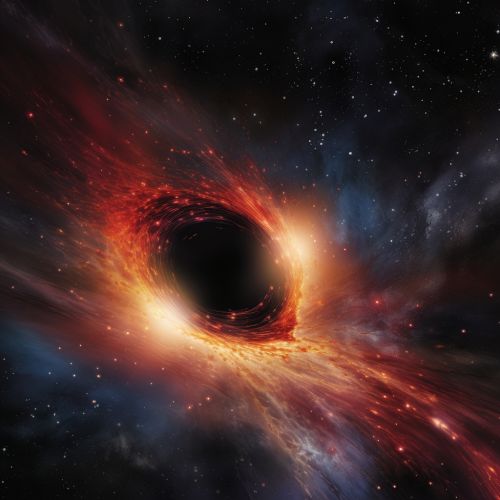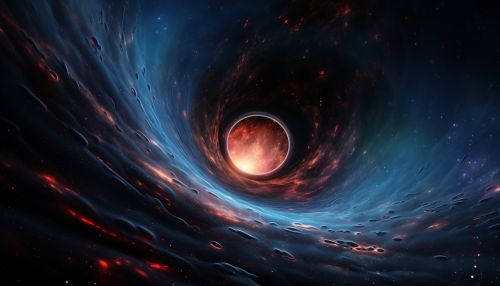Supermassive Black Hole
Introduction
A supermassive black hole (SMBH) is the largest type of black hole, containing a mass of the order of hundreds of thousands to billions of times the mass of the Sun. These black holes are found at the center of almost all currently known massive galaxies. In the case of the Milky Way, the SMBH is believed to correspond with the location of Sagittarius A*.


Formation and Evolution
The formation of supermassive black holes remains an open field of research. Astrophysicists agree that once a black hole has formed, it can grow by absorbing mass from its surroundings. By accreting matter and by merging with other black holes, supermassive black holes of millions of solar masses (Msol) could form.
Physical Properties
The physical properties of supermassive black holes are fundamentally different from those of lower-mass classifications. First, the average density of a supermassive black hole can be less than the density of water. This is because the Schwarzschild radius is directly proportional to the mass. Since the volume of a spherical object (such as the event horizon of a non-rotating black hole) is directly proportional to the cube of the radius, the average density of a black hole is inversely proportional to the square of the mass, and thus higher mass black holes have lower average density.
Observational Evidence
The best evidence for the existence of supermassive black holes is provided by the Doppler effect of water masers caused by the gravity of the black hole. The use of the Doppler effect for sound allows for simple calculations between the frequency of the in-going sound, the frequency of the reflected sound, and the speed of the object. In addition, the use of the Doppler effect for light allows for the measurement of the speed of distant galaxies.
Supermassive Black Holes and Galaxy Evolution
Supermassive black holes are closely related to the evolution of galaxies. The energy output of the accretion disk surrounding the black hole can be so high that it can significantly affect the galaxy in which the black hole resides. This is thought to be the reason for the correlation between the mass of the central black holes of galaxies and the velocity dispersion of the galaxy's bulge.
